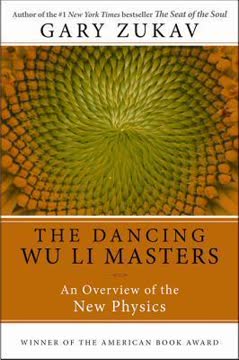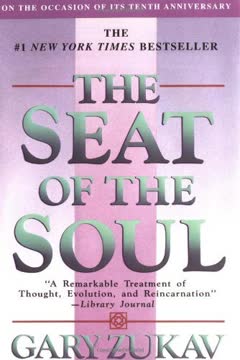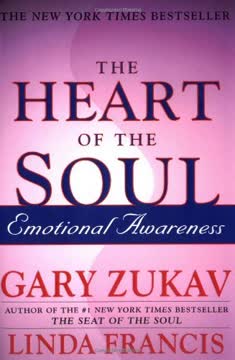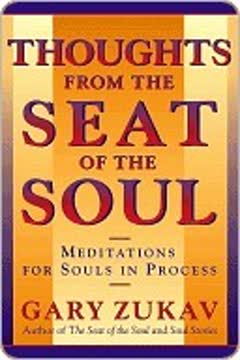Key Takeaways
1. Physics is Wu Li: Patterns of Organic Energy
“Wu Li” was more than poetic. It was the best definition of physics that the conference would produce. It caught that certain something, that living quality that we were seeking to express in a book, that thing without which physics becomes sterile.
Physics is Wu Li. The Chinese word for physics, Wu Li, translates poetically to "Patterns of Organic Energy." This definition captures a dynamic, living quality of the universe that classical Western science, focused on inert matter and rigid laws, often missed. It suggests that physics is not just about static objects but about the vibrant, interconnected flow of energy.
Beyond sterile mechanics. Unlike the cold, mechanical view of the universe as a Great Machine, the Wu Li perspective sees the cosmos as inherently alive and energetic. This aligns with modern physics discoveries, where energy and pattern are more fundamental than solid "stuff." The term itself hints at a worldview where matter and energy are intertwined, a concept central to 20th-century physics.
A different understanding. The multiple meanings of Wu Li in Chinese – "Patterns of Organic Energy," "My Way," "Nonsense," "I Clutch My Ideas," and "Enlightenment" – provide a rich metaphor for the journey of understanding physics. It suggests that the path involves personal perspective, confronting paradox, letting go of preconceived notions, and ultimately, a form of profound insight or enlightenment.
2. The End of Objectivity: The Observer Creates Reality
“Participator” is the incontrovertible new concept given by quantum mechanics. It strikes down the term “observer” of classical theory, the man who stands safely behind the thick glass wall and watches what goes on without taking part. It can’t be done, quantum mechanics says.
No objective reality. Classical physics assumed an external world existing independently of the observer, which could be studied objectively without being changed. Quantum mechanics shatters this myth. At the subatomic level, the act of observation fundamentally alters the reality being observed.
The participator. We are not passive observers but active participators in creating the reality we experience. The choice of what to measure influences what properties manifest. For example, deciding to measure a particle's position means we cannot precisely know its momentum, and vice-versa (Heisenberg's Uncertainty Principle).
Physics and psychology merge. This suggests that the distinction between "in here" (consciousness) and "out there" (physical reality) is blurred. Some interpretations even propose that consciousness plays a role in actualizing quantum possibilities, hinting that physics might be studying the structure of consciousness itself.
3. The Wave-Particle Duality: More Than Both
“The central mystery of quantum theory,” wrote Henry Stapp, is ‘How does information get around so quick?’”
Light is both wave and particle. Experiments show light behaves as waves (Young's double-slit experiment) and as particles (Einstein's photoelectric effect). This wave-particle duality is paradoxical in classical terms, where something must be either one or the other.
Matter is also wave and particle. Louis de Broglie proposed that matter, like electrons, also has wave-like properties, later confirmed by experiments showing electron diffraction. This extends the duality to everything, from photons to baseballs (though matter waves are only significant at the subatomic scale).
Beyond either/or. The duality forces us to abandon the "either-or" logic of classical thought. Light (and matter) is not either a wave or a particle; it is both, depending on how we interact with it. These are not inherent properties of light itself, but properties of our interaction with light, suggesting reality is interaction, not independent things.
4. Quantum Mechanics Predicts Probabilities, Not Events
“Quantum mechanics is very impressive,” he wrote in a letter to Max Born, “…but I am convinced that God does not play dice.”
Loss of determinism. Unlike Newtonian physics, which predicts specific events based on initial conditions, quantum mechanics can only predict probabilities. This is because, due to the uncertainty principle, we cannot know both the position and momentum of a particle precisely enough to predict its exact future path.
Statistical laws. Quantum mechanics abandons the idea of deterministic laws governing individual subatomic events. Instead, it provides statistical laws that accurately describe the behavior of large groups of particles. For example, we can predict how many radium atoms will decay in an hour, but not which ones.
Chance at the core. The theory suggests that at the fundamental level, individual events are determined by pure chance. This inherent randomness was deeply unsettling to physicists like Einstein, who sought a completely deterministic description of the universe.
5. The Role of "I": Our Choices Shape What We Observe
Metaphysically, this is very close to saying that we create certain properties because we choose to measure those properties.
Choice influences reality. Quantum mechanics implies that the observer's choice of what to measure influences the properties that manifest in the observed system. By selecting an experiment, we choose which complementary aspect (like wave or particle) of a phenomenon will appear.
Complementarity in action. Niels Bohr's principle of complementarity explains the wave-particle duality by stating that these are mutually exclusive, yet necessary, aspects of a phenomenon. Which aspect we see depends entirely on the experimental setup we choose, highlighting the observer's active role.
Beyond passive observation. This challenges the classical view of the observer as a passive recipient of information from an independent reality. It suggests a profound interrelation between consciousness and the physical world, where our intentions and choices may play a role in shaping the reality we experience.
6. Relativity: Space and Time Are Not Absolute
Henceforth space by itself, and time by itself, are doomed to fade away into mere shadows, and only a kind of union of the two will preserve an independent reality.
No universal clock. Einstein's special theory of relativity reveals that there is no single, absolute time that flows uniformly throughout the universe. Time is relative to the observer's state of motion. Moving clocks run slower than stationary ones from the perspective of a stationary observer.
Space and time are one. Special relativity shows that space and time are not separate entities but are interwoven into a single four-dimensional fabric called space-time. Events are located not just in space, but in space-time, and the interval between two events is absolute, regardless of the observer's motion.
Appearances are relative. The theory demonstrates that measurements of length and duration are relative to the observer's velocity. Objects appear shorter and time appears slower as velocity increases, effects only noticeable at speeds approaching that of light. This shattered the Newtonian concepts of absolute space and time.
7. Gravity is Geometry, Not Force
In other words, according to Einstein’s ultimate vision, there are no such things as “gravitational fields” and “masses.” They are only mental creations.
Gravity as warped space-time. Einstein's general theory of relativity redefines gravity not as a mysterious force acting at a distance, but as a curvature or warping of the space-time continuum caused by the presence of mass and energy. Objects follow the easiest path (geodesic) through this curved space-time.
Principle of equivalence. The equivalence principle states that uniform acceleration is indistinguishable from a constant gravitational field. This insight was key, suggesting that gravity is a property of space-time itself, not a force between objects.
Geometry is physical. The theory shows that the geometry of space-time is not fixed and Euclidean but is dynamic and influenced by matter. This means that the rules of geometry we learn in school are only valid in limited, flat regions of space-time, not universally.
8. The Universe is Dancing Energy, Not Stuff
In other words, “matter” is actually a series of patterns out of focus. The search for the ultimate stuff of the universe ends with the discovery that there isn’t any.
No fundamental substance. Particle physics, in its search for the ultimate building blocks, has found no irreducible "stuff." Instead, matter dissolves into patterns of energy. What we perceive as solid objects are, at the deepest level, transient manifestations of energy.
Creation and annihilation. The subatomic world is a continuous dance of particles being created, annihilated, and transformed. Particles are not static entities but momentary events or interactions. This aligns with Eastern mystical views of reality as dynamic and impermanent.
Fields are fundamental. Quantum field theory suggests that reality is composed of fundamental fields that permeate space. Particles are seen as localized interactions or excitations of these fields, not as independent objects. This view further emphasizes the nonsubstantial nature of the universe.
9. Quantum Logic: Experience Defies Classical Thought
“Nonsense” is that which does not fit into the prearranged patterns which we have superimposed on reality. There is no such thing as “nonsense” apart from a judgmental intellect which calls it that.
Limits of classical logic. Quantum mechanics reveals that our everyday logic, based on the law of distributivity ("A and (B or C)" equals "(A and B) or (A and C)"), does not apply to quantum phenomena. The polarizer experiment demonstrates this failure, showing that inserting a diagonal polarizer between horizontal and vertical ones allows light through, which classical logic says is impossible.
Experience follows different rules. This suggests that the rules of classical logic are not inherent to reality itself but are structures we impose on our perceptions, particularly when using symbols or language. Experience, or "quantum logic," is more permissive and allows for possibilities (coherent superpositions) that classical logic forbids.
Beyond symbolic thought. Understanding quantum mechanics, and perhaps reality itself, requires moving beyond the limitations of symbolic, logical thought. It points towards a need for a "beginner's mind" – an openness to perceive reality as it is, even when it appears as "nonsense" from our established conceptual framework.
10. Quantum Connectedness: Non-Local Unity
Quantum phenomena provide prima facie evidence that information gets around in ways that do not conform to classical ideas.
The EPR paradox. The Einstein-Podolsky-Rosen (EPR) thought experiment highlighted a strange connection between paired particles. Measuring a property of one particle instantaneously seems to influence the state of its distant twin, regardless of the distance separating them.
Bell's theorem. J.S. Bell's mathematical proof showed that if quantum mechanics' statistical predictions are correct (which experiments confirm), then either the principle of local causes (what happens here only depends on local factors) or the assumption of "contrafactual definiteness" (that alternative choices would have definite outcomes) must be false.
Non-locality or superdeterminism? The most straightforward implication is that reality is non-local, meaning there are instantaneous, faster-than-light connections between apparently separate events. Other possibilities include a radical superdeterminism (no free will, no alternative possibilities) or the Many Worlds interpretation (all possibilities happen in different universes).
Profound implications. Regardless of the interpretation, Bell's theorem demands that our commonsense view of a world composed of independent, locally interacting parts is fundamentally wrong. It suggests a deep, interconnected unity underlying the universe, echoing mystical insights about the oneness of all things.
Last updated:
FAQ
1. What is Dancing Wu Li Masters by Gary Zukav about?
- Accessible overview of new physics: The book introduces quantum mechanics, relativity, and particle physics in language suitable for non-scientists, making complex ideas approachable.
- Bridging science and philosophy: Zukav connects modern physics with philosophical questions about reality, consciousness, and perception, drawing parallels with Eastern philosophies like Taoism and Buddhism.
- Metaphorical approach: The title refers to "Wu Li," a Chinese term meaning "patterns of organic energy," symbolizing the poetic and interconnected nature of the universe as revealed by new physics.
- Challenging classical assumptions: The book explores how modern physics undermines traditional notions of objectivity, separateness, and causality, inviting readers to rethink their worldview.
2. Why should I read Dancing Wu Li Masters by Gary Zukav?
- Demystifies complex science: The book translates difficult concepts in quantum mechanics and relativity into plain language, making them enjoyable and comprehensible for non-experts.
- Connects science and spirituality: Zukav bridges Western scientific discoveries with Eastern philosophical traditions, offering a holistic perspective on reality.
- Encourages intellectual openness: The narrative promotes a "beginner’s mind," urging readers to let go of fixed ideas and embrace uncertainty and paradox.
- Expands worldview: By challenging classical logic and the concept of separateness, the book invites readers to reconsider their understanding of the universe and their place within it.
3. What are the key takeaways from Dancing Wu Li Masters by Gary Zukav?
- Reality is interconnected: Modern physics reveals a universe where everything is fundamentally connected, echoing Eastern philosophies of unity and oneness.
- Limits of objectivity: The observer plays a crucial role in shaping reality, challenging the idea of an independent, objective universe.
- Science and mysticism converge: The book shows surprising parallels between quantum physics and mystical traditions, suggesting that both point toward a deeper, holistic understanding of existence.
- Language and models are limited: Scientific theories and symbols are useful but cannot fully capture the richness of direct experience or ultimate reality.
4. What is the significance of the "Wu Li" metaphor in Dancing Wu Li Masters?
- Multiple meanings: "Wu Li" translates to "patterns of organic energy," "my way," "nonsense," "I clutch my ideas," and "enlightenment," reflecting the multifaceted nature of physics and perception.
- Physics as a dance: The metaphor portrays physicists as Wu Li Masters who engage in a creative, ever-evolving dance with the universe, rather than simply manipulating equations.
- Bridging East and West: The Wu Li metaphor connects ancient Chinese philosophical views with modern physics, highlighting a convergence of scientific and mystical understandings.
- Teaching essence, not facts: The metaphor encourages approaching each lesson as if for the first time, focusing on the essence rather than rote memorization.
5. How does Dancing Wu Li Masters by Gary Zukav explain the difference between old physics and new physics?
- Old physics (Newtonian): Assumes an objective reality independent of observers, governed by deterministic laws that predict exact outcomes.
- New physics (quantum and relativity): Reveals a probabilistic, observer-dependent universe where space and time are relative, not absolute.
- Philosophical shift: The new physics challenges the mechanistic, clockwork view of the universe, suggesting a more interconnected and participatory reality.
- Impact on worldview: This shift invites readers to reconsider fundamental assumptions about causality, objectivity, and the nature of existence.
6. What are the main concepts of quantum mechanics explained in Dancing Wu Li Masters?
- Wave-particle duality: Light and matter exhibit both wave-like and particle-like properties, depending on how they are observed, a paradox resolved by the concept of complementarity.
- Uncertainty principle: Heisenberg’s principle states that certain pairs of properties, like position and momentum, cannot both be known precisely at the same time, limiting predictability.
- Wave function and probability: The Schrödinger equation describes the evolution of a system’s wave function, representing all possible states and their probabilities.
- Measurement problem: The act of measurement collapses the wave function from many possibilities to a single actuality, raising questions about the role of the observer.
7. How does Dancing Wu Li Masters by Gary Zukav explain the role of the observer in quantum physics?
- Observer effect: Measurement affects the system being observed; the observer cannot be separated from the observed in quantum mechanics.
- Creation of reality: Reality is co-created through our interactions and intentions, blurring the distinction between "in here" and "out there."
- Complementarity and subjectivity: Wave-like and particle-like behaviors are not intrinsic properties but depend on how we interact with the system, highlighting the subjective aspect of physical phenomena.
- No independent reality between measurements: According to the Copenhagen Interpretation, reality is defined by observed events, not by what happens between measurements.
8. How does Dancing Wu Li Masters by Gary Zukav relate physics to Eastern philosophies like Buddhism and Taoism?
- Unity and interconnectedness: The book draws parallels between quantum physics’ view of reality as an interconnected dance of energy and Eastern concepts of undifferentiated reality.
- Illusion of separateness: Both physics and Eastern thought question the reality of separate, independent entities, emphasizing that distinctions are mental constructs or illusions.
- Paradoxes and koans: Quantum paradoxes are likened to Zen koans, which are designed to transcend ordinary logic and provoke insight.
- Limits of language: Both traditions recognize that language and symbols are limited in describing reality, advocating for direct experience as a way to grasp the true nature of existence.
9. What is Bell’s theorem and why is it important in Dancing Wu Li Masters by Gary Zukav?
- Challenge to locality: Bell’s theorem mathematically proves that if quantum mechanics is correct, then the principle of local causes (no influence faster than light) must be false.
- Experimental confirmation: Experiments have confirmed quantum predictions, supporting the idea of nonlocality or instantaneous connections between distant particles.
- Implications for reality: Bell’s theorem forces a reconsideration of assumptions like free will, causality, and the nature of reality itself.
- Connection to mysticism: The theorem’s implications of deep interconnectedness resonate with mystical experiences of unity and may provide a scientific framework for phenomena previously dismissed by mainstream science.
10. How does Dancing Wu Li Masters by Gary Zukav explain the nature of subatomic particles and the "particle zoo"?
- Particles as energy patterns: Subatomic particles are not solid objects but transient patterns of energy and field interactions, constantly created and annihilated.
- Indistinguishability and quantum numbers: Particles of the same type are indistinguishable and defined by properties like mass, charge, and spin, but lack individuality.
- Virtual particles and forces: Forces arise from the exchange of virtual particles, mediating interactions without action-at-a-distance.
- Limitations of classical concepts: Quantum theory reveals that particles have no independent existence apart from their interactions and measurements.
11. What is the role of the wave function and quantum logic in understanding quantum mechanics according to Dancing Wu Li Masters by Gary Zukav?
- Wave function as potentiality: The wave function represents a superposition of all possible outcomes, evolving deterministically until measurement causes its collapse.
- Limits of classical logic: Classical logic fails in quantum phenomena; quantum logic better reflects the nature of experience and quantum reality.
- Quantum logic vs. classical logic: Quantum logic accommodates coherent superpositions, challenging traditional "either-or" reasoning.
- Language and experience: The book emphasizes that mathematical constructs cannot fully capture experience, and quantum logic points toward a more accurate understanding of reality’s structure.
12. What are the most profound philosophical and spiritual insights from Dancing Wu Li Masters by Gary Zukav?
- Unity of all things: Everything is a manifestation of the same undifferentiated reality, echoing Buddhist and Taoist teachings on oneness and emptiness.
- Limits of knowledge and language: Scientific theories are models that work but do not capture ultimate truth; symbols and concepts are limited tools for understanding experience.
- Dance of creation and annihilation: The subatomic world is a continuous dance of creation and destruction, paralleling Eastern images like the wheel of life and the dance of Shiva.
- Toward a new science: The book suggests that science is evolving toward a new form of understanding that integrates physics, consciousness, and spirituality into a holistic worldview.
Review Summary
The Dancing Wu Li Masters received mixed reviews. Many praised its accessible explanation of quantum physics concepts and connections to Eastern philosophy, finding it mind-expanding and enlightening. Critics appreciated the historical approach and clear writing style. However, some felt it made unfounded leaps in logic, blurred science with mysticism, and was dated. Readers debated whether the book's philosophical speculations were thought-provoking or misleading. Despite criticisms, many found it an engaging introduction to complex physics topics for laypeople, though opinions varied on its scientific accuracy and metaphysical interpretations.
Similar Books

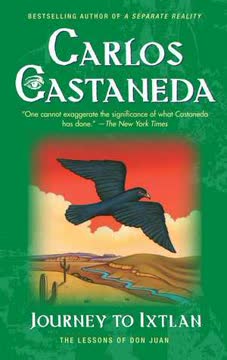
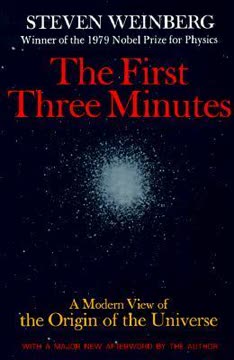
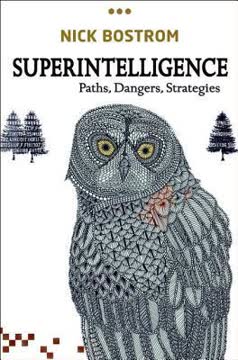
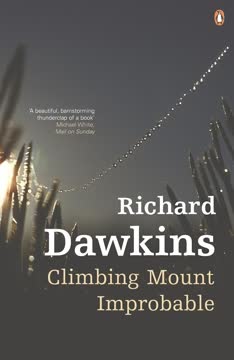
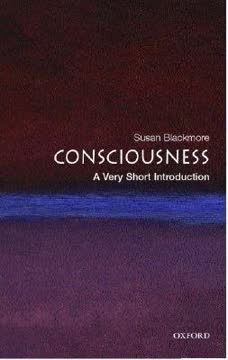
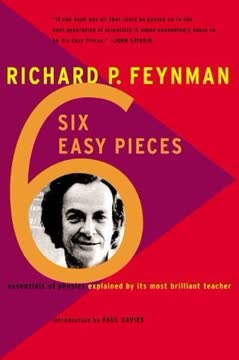
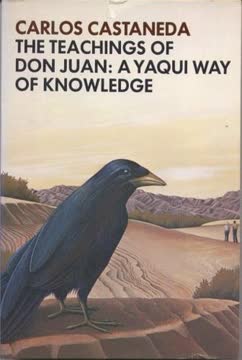
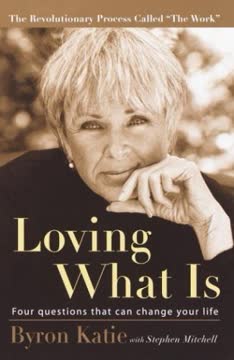
Download PDF
Download EPUB
.epub digital book format is ideal for reading ebooks on phones, tablets, and e-readers.
